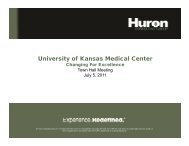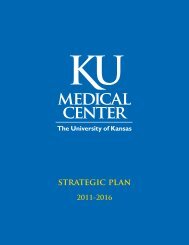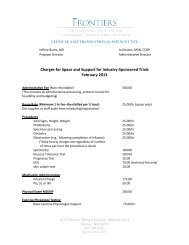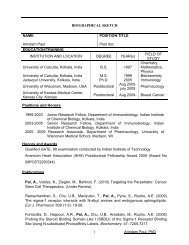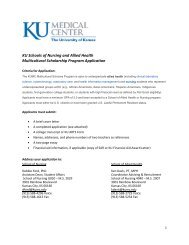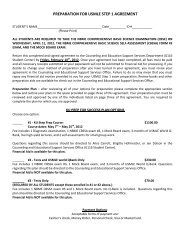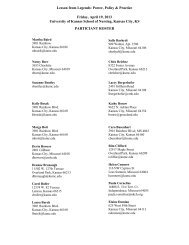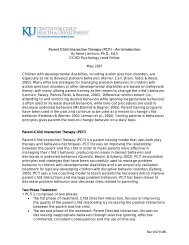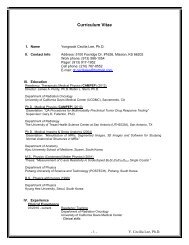Clinical Orientation Manual - University of Kansas Medical Center
Clinical Orientation Manual - University of Kansas Medical Center
Clinical Orientation Manual - University of Kansas Medical Center
You also want an ePaper? Increase the reach of your titles
YUMPU automatically turns print PDFs into web optimized ePapers that Google loves.
v. Extinction (light touch on symmetrical sides concurrently)<br />
6. Motor (strength, coordination, gait)<br />
. Strength<br />
. Shoulder strength (chicken wings) and ROM<br />
i. Arm flexion/extension<br />
ii. Wrist flexion/extension<br />
iii. Finger abduction/flexion/extension<br />
iv. Thumb opposition<br />
v. Hip flexion/extension/abduction/adduction<br />
vi. Knee flexion/extension<br />
vii. Foot dorsiflexion/plantarflexion<br />
viii. Coordination (checking cerebellar, motor, vestibular and proprioception)<br />
ix. Rapid alternating movements - checks cerebellar fxn<br />
1. Arms - pancake flip or pointer to thumb tap<br />
2. Legs - have pt tap their foot against your hand<br />
x. Point to point movements<br />
1. Finger to nose - cerebellar<br />
2. Outstretched arm to finger with eyes closed - cerebellar & vestibular<br />
3. Heel-to-shin - cerebellar and proprioception<br />
xi. Stance<br />
1. Romberg Test - tests proprioception<br />
2. Pronator Drift - significant for upper motor neuron lesion<br />
3. Extend arms, close eyes and tap - strength, proprioception, coordination<br />
a. Overshoots & bounces, but returns to original position = cerebellar<br />
b. Upward drift w/ searching, writhing movements = proprioception<br />
a. Gait - cerebellar, proprioception, motor<br />
. Rising from seated position<br />
i. Walk across room (tandem, toes, heels)<br />
21



